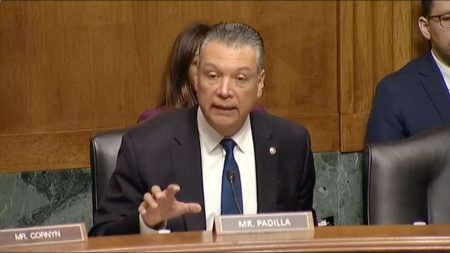Middle-Class Economics for the 21st Century

White House Report
President Obama’s vision for middle class economics is a straightforward reiteration of the traditional American Dream.
His plan is to restore the link between hard work and opportunity, and ensure that every American has the chance to benefit from economic growth. That means ensuring that all working families can afford housing, child care, college, healthcare, and retirement.
To achieve those ends, the president’s 2015-16 budget outline triples the child care tax credit, encourages state paid-leave initiatives, ensures access to health care, offers two years of tuition-free community college, strengthens job training opportunities, and helps families save for retirement.
The budget aims to ensure that families get a good start in life. It:
- adds access to quality, affordable child care for more than 1.1 million additional children under age four by 2025; helps states ensure sufficient quality care services that families can access.
- triples Child & Dependent Care tax credit of up to $3,000 per child for families with children under age five; makes the full credit available to families with incomes of up to $120,000. The reforms would benefit 5.1 million families, including 6.7 million children.
- improves Head Start programs and infant and toddler care for tens of thousands of additional infants and toddlers and provides over $1 billion in additional funding for Head Start to support full-day, year-round programs.
- supports Preschool for All to provide all four-year-olds from low- and moderate-income families with access to high-quality preschool, and encourages states to expand those programs to reach additional children. Provides $750 million for the Department of Education’s Preschool Development Grants, tripling the 2015 level and broadening it from the current 18 participating states to 40.
- expands voluntary, evidence-based home visiting programs to enable nurses, social workers, and other professionals to connect families to services to support the child’s health, development, and ability to learn.
The budget increases Title I funding by $1 billion and proposes additional funding to support districts that are using their Federal formula funds for evidence-based interventions:
- increases funding for special education and efforts to assist English language learners.
- provides broad support for educators at every phase of their careers.
- invests more than $3 billion on science, technology, engineering, and math (STEM) education.
The budget reforms the tax code to reward and support work. When both spouses work, a family faces additional costs, for commuting, child care, and, increasingly, elder care. The budget proposes a new $500 “second earner” tax credit, which will benefit 24 million dual-earner couples; expands the earned income tax credit (EITC); makes permanent improvements to the EITC and child tax credit, scheduled to expire at the end of 2017, that augment wages for 16 million families with 29 million children each year.
The President’s proposal:
- encourages states to develop paid family leave programs by providing funding through the Paid Leave Partnership Initiative
- helps workers save for retirement by making savings participation automatic for full-time workers; allows long-term part-time employees to participate in employers’ retirement plans; provides tax incentives to offset administrative expenses for small businesses that adopt retirement plans.
- supports innovative projects to improve upward mobility by improving Promise Zones; adds a new initiative, the Upward Mobility Project, to allow states and communities to combine funds from four existing block grant programs designed to promote opportunity and economic development and reduce poverty.
The funding streams available include DHHS Social Services Block Grant and Community Services Block Grant; the Department of Housing and Urban Development’s Community Development Block Grant; and HOME Investment Partnerships Program. In addition, participating communities will be eligible to receive $1.5 billion in new funding over five years.
Higher Education
To reestablish America’s world-class higher education system, developed after WWII, the administration invests in affordable post-secondary education and builds on the bipartisan Workforce Innovation and Opportunity Act with investments that connect workers with good jobs and prepare them with skills employers need. The budget:
- provides tuition-free community college to provide two years of free community college to responsible students, and ensures that community colleges are a gateway to a career or four-year degree.
- ensures that Pell Grants keep pace with inflation.
- keeps student loans manageable by extending the Pay-As-You-Earn (PAYE) plan, which caps student loan payments at 10% of graduates’ disposable income, to all student borrowers.
- expands education tax benefits by cutting taxes for 8.5 million families and students, simplifying taxes for more than 25 million families and students who claim education tax benefits, and providing students working toward a college degree with up to $2,500 of assistance each year for five years; also includes a proposal to significantly simplify the Free Application for Federal Student Aid (FAFSA).
- drives performance and innovation in higher education through the First in the World Fund, which recognizes that leading the world in education requires higher college graduation rates, not just attendance.
The budget also expands technical training programs for middle class jobs. Community colleges, like those in Tennessee and Texas, that build strong employer partnerships and offer training in in-demand fields are creating career pathways to the middle class.
The budget requests $200 million for a new American Technical Training Fund to create or expand innovative, evidence-based job training programs in such fields that provide a path to the middle class for hard-working, low-wage Americans. The budget:
- proposes to support more in-person career counseling and employment services that help unemployed workers find a career-path job or the training they need to prepare for one. It will double the number of workers receiving training through the workforce development system.
- would double registered apprenticeships across the United States over the next five years to allow workers to learn skills while earning a paycheck.
- funds training to launch and sustain businesses, including the business practices entrepreneurs need to translate a good idea into a growing business through the Small Business Administration’s Boots to Business initiative and the Entrepreneurship Education initiative.
Creating a 21st-Century Economy
Creating jobs that pay good wages is the best way to grow our economy and the middle class. To invest in American, manufacturing, technological advancement, and clean energy alternatives and energy efficiency, the budget proposal would modernize ports and improve bridges, roads, trains, and broadband, creating jobs for thousands of construction workers and engineers and making it easier to do business.
Expanding the National Network of Manufacturing Institutes
The budget invests in home-grown products and ideas through a public-private investment fund for advanced manufacturing start-ups, to help ensure that if a technology is invented in the United States, it can be made in the United States. In addition, it:
- rebuilds infrastructure with a $478 billion, six-year transportation proposal (paid for with a tax on the $3 trillion in corporate reserves stashed overseas). Funds would be used to repair existing roads and bridges and to build new highways, freight networks, and bus, subway, rapid transit, light rail, and passenger rail systems.
- boosts private investment by establishing an independent national infrastructure bank to leverage private and public capital to support infrastructure projects of national and regional significance.
- invests in innovative research and development with a 6% increase for R & D; and in clean energy, improving energy security, and enhancing preparedness and resilience to climate change.
Keeping Americans Safe at Home and Abroad
The budget provides $561 billion in base discretionary funding for national defense—$38 billion above sequestration levels—and $58 billion for Overseas Contingency Operations to provide the resources needed to protect the country’s security and well-being at home and abroad. It:
- provides the necessary resources to degrade and ultimately defeat ISIL, address the ongoing humanitarian crisis in the Middle East, train and equip Iraqi security forces, support regional partners, and bring stability and aim toward a negotiated settlement to end the conflict in Syria
- includes proposals for political, economic, and military support to governments most targeted by Russian pressure, with funding to bolster democracy, increase the capabilities of security forces, strengthen the rule of law, and promote European Union integration, trade, and energy security.
- provides $1 billion to contribute to the evolution of an economically integrated Central America that is fully democratic, provides greater economic opportunities to its people, promotes more accountable, transparent, and effective public institutions and ensures the safety of its citizens, addressing the challenges that have resulted in an influx of migration from the region.
The budget also provides $14 billion to support cybersecurity efforts and strengthen U.S. cybersecurity defenses. In addition, it:
- supports the Global Health Security Agenda, increases funding to eradicate polio and other global health challenges, and creates a new Impact Fund for targeted global HIV/AIDS efforts; increases funding for domestic preparedness efforts; and makes investments to address the domestic HIV epidemic to help states develop HIV implementation plans.
- includes more than $100 million to expand existing prescription drug monitoring programs and drug treatment.
- provides resources and funding for veterans for high-quality and timely health care, ending veteran homelessness, and helping them and their families get good jobs, education, and access to affordable housing.
Creating a Government for the Future
The Administration has launched successful efforts to eliminate wasteful IT spending, reduce the Federal real property footprint, modernize and improve citizen-facing services, and open tens of thousands of Federal data sets to spur innovation in the private sector. The budget:
- leverages the Federal Government’s buying power to bring more value and efficiency to using taxpayer dollars including new Idea Labs to support employees with promising ideas, and to attract and retain the best talent in the Federal workforce
- includes $105 million to create digital services teams, increase accountability for IT spending, and improve agency cybersecurity and cyber readiness
- would consolidate and reorganize Government agencies to make them leaner and more efficient
- reduces the annual deficit to below 3% of GDP, and replaces mindless austerity with smart reforms, pays for all new investments, and obtains $1.8 trillion in deficit reduction primarily from health, tax, and immigration reforms.
The budget pays for all new investments, including the new and expanded tax credits for middle-class and working families, and mandatory investments in community college and preschool through spending or tax reforms. In particular, the budget pays for many of its investments in helping middle class families get ahead through three important reforms to the tax system.
First, it would eliminate what may be the largest single loophole in the tax code – a provision known as “stepped-up basis” that lets wealthy households avoid taxes on hundreds of billions in capital gains taxes each year.
Second, it would raise the top capital gains and dividend rate for high-income households to 28 percent, the rate under President Reagan.
Third, it reforms financial sector taxation to make it more costly for large, highly-leveraged financial firms to finance their activities with excessive borrowing, reducing risks to the broader economy.
In addition to paying for new investments, the $1.8 trillion in deficit reduction in the budget is achieved primarily by focusing on healthcare cost growth versus inadequate revenue levels in the face of an aging population. Specifically, it includes:
- $400 billion in health savings that build on the Affordable Care Act to help maintain slower cost growth while improving health care quality
- $640 billion in net deficit reduction by limiting tax benefits that are not efficient in achieving social goals
- $160 billion in savings from immigration reform
During every year of the 10-year budget window, the President’s proposal brings annual deficits below the 40-year historical average of 3.2 percent of GDP. A key test of fiscal sustainability is whether debt is stable or declining as a share of the economy, resulting in interest payments that consume a stable or falling share of the Nation’s resources over time. The Budget meets that test, showing that investments in growth and opportunity are compatible with also putting the nation’s finances on a strong and sustainable path.





